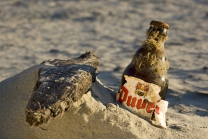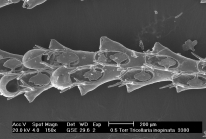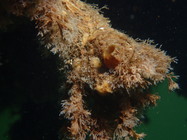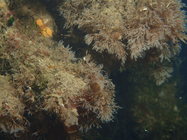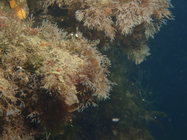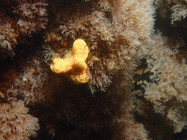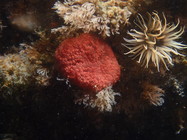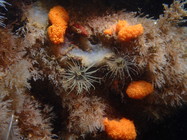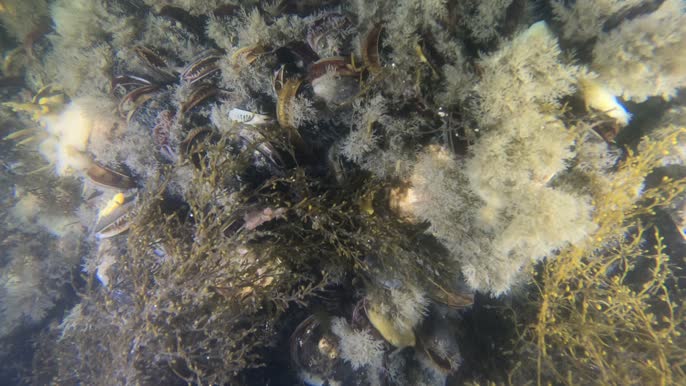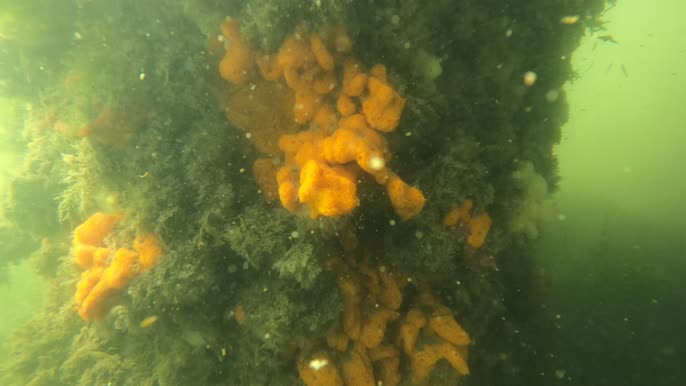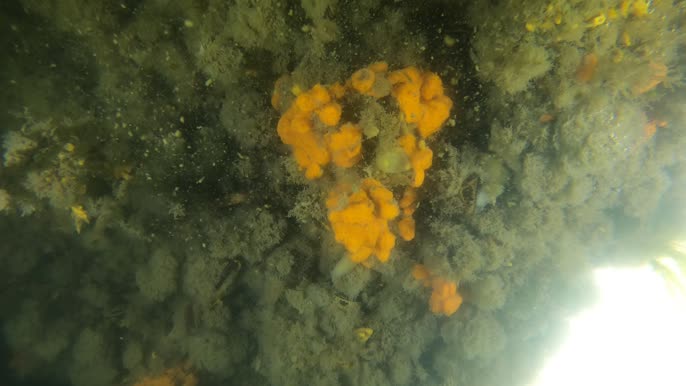WoRMS taxon details
Tricellaria inopinata d'Hondt & Occhipinti Ambrogi, 1985
111254 (urn:lsid:marinespecies.org:taxname:111254)
accepted
Species
marine, brackish, fresh, terrestrial
d'Hondt, J.-L.; Occhipinti Ambrogi, A. (1985). Tricellaria inopinata , n.sp., un nouveau bryozoaire Cheilostome de la faune Mediterraneene. <em>Marine Ecology.</em> 6: 35-46., available online at https://doi.org/10.1111/j.1439-0485.1985.tb00319.x [details] Available for editors  [request]
[request]
Holotype MNHN BRY-11596, geounit Venice
Holotype MNHN BRY-11596, geounit Venice [details]
Distribution The invasive species Tricellaria inopinata probably originates from the North Pacific Ocean. It was first described from...
Distribution The invasive species Tricellaria inopinata probably originates from the North Pacific Ocean. It was first described from the lagoon of Venice, in 1985. Since then it has spread over much of the north-east Atlantic Ocean. [details]
Bock, P. (2024). World List of Bryozoa. Tricellaria inopinata d'Hondt & Occhipinti Ambrogi, 1985. Accessed through: World Register of Marine Species at: https://www.marinespecies.org/aphia.php?p=taxdetails&id=111254 on 2024-04-20
Date
action
by
![]() The webpage text is licensed under a Creative Commons Attribution 4.0 License
The webpage text is licensed under a Creative Commons Attribution 4.0 License
original description
d'Hondt, J.-L.; Occhipinti Ambrogi, A. (1985). Tricellaria inopinata , n.sp., un nouveau bryozoaire Cheilostome de la faune Mediterraneene. <em>Marine Ecology.</em> 6: 35-46., available online at https://doi.org/10.1111/j.1439-0485.1985.tb00319.x [details] Available for editors  [request]
[request]
context source (Introduced species) Katsanevakis, S.; Bogucarskis, K.; Gatto, F.; Vandekerkhove, J.; Deriu, I.; Cardoso A.S. (2012). Building the European Alien Species Information Network (EASIN): a novel approach for the exploration of distributed alien species data. <em>BioInvasions Records.</em> 1: 235-245., available online at http://easin.jrc.ec.europa.eu [details] Available for editors [request]
[request]
context source (Schelde) (2010). Bedreiging voor biodiversiteit. Indicatoren voor het Schelde-estuarium. <em>Opgemaakt in opdracht van Afdeling Maritieme Toegang, projectgroep EcoWaMorSe, Vlaams Nederlandse Scheldecommissie. VLIZ Information Sheets, 200. Vlaams Instituut voor de Zee (VLIZ): Oostende.</em> 7 pp. (look up in IMIS) [details]
basis of record Hayward, P.J. (2001). Bryozoa, <B><I>in</I></B>: Costello, M.J. <i>et al.</i> (Ed.) (2001). <i>European register of marine species: a check-list of the marine species in Europe and a bibliography of guides to their identification. Collection Patrimoines Naturels,</i> 50: pp. 325-333 (look up in IMIS) [details]
additional source Streftaris, N., A. Zenetos & E. Papathanassiou. (2005). Globalisation in marine ecosystems: the story of non-indigenous marine species across European seas. <em>Oceanogry and Marine Biology: an Annual Review.</em> 43: 419-453. (look up in IMIS) [details] Available for editors [request]
[request]
additional source Zenetos, A.; Çinar, M.E.; Pancucci-Papadopoulou, M.A.; Harmelin, J.-G.; Furnari, G.; Andaloro, F.; Bellou, N.; Streftaris, N.; Zibrowius, H. (2005). Annotated list of marine alien species in the Mediterranean with records of the worst invasive species. <em>Mediterranean Marine Science.</em> 6 (2): 63-118., available online at https://www.researchgate.net/publication/273213810_Annotated_list_of_marine_alien_species_in_the_Mediterranean_with_records_of_the_worst_invasive_species [details] Available for editors [request]
[request]
additional source Gordon, D. P.; Taylor, P. D.; Bigey, F. P. (2009). Phylum Bryozoa: moss animals, sea mats, lace corals. <em>in: Gordon, D.P. (Ed.) (2009). New Zealand inventory of biodiversity: 1. Kingdom Animalia: Radiata, Lophotrochozoa, Deuterostomia.</em> pp. 271-297. [details]
additional source Occhipinti-Ambrogi, A., A. Marchini, G. Cantone, A. Castelli, C. Chimenz, M. Cormaci, C. Froglia, G. Furnari, M.C. Gambi, G. Giaccone, A. Giangrande, C. Gravil, F. Mastrototaro, C. Mazziotti, L. Orsi-Relini & S. Piraino. (2010). Alien species along the Italian coasts: an overview. <em>Biological Invasions.</em> 13(1): 215-237., available online at https://doi.org/10.1007/s10530-010-9803-y [details] Available for editors [request]
[request]
additional source Zenetos, A.; Gofas, S.; Verlaque, M.; Cinar, M.; Garcia Raso, J.; Bianchi, C.; Morri, C.; Azzurro, E.; Bilecenoglu, M.; Froglia, C.; Siokou, I.; Violanti, D.; Sfriso, A.; San Martin, G.; Giangrande, A.; Katagan, T.; Ballesteros, E.; Ramos-Espla, A.; Mastrototaro, F.; Ocana, O.; Zingone, A.; Gambi, M.; Streftaris, N. (2010). Alien species in the Mediterranean Sea by 2010. A contribution to the application of European Union's Marine Strategy Framework Directive (MSFD). Part I. Spatial distribution. <em>Mediterranean Marine Science.</em> 11(2): 381-493., available online at https://doi.org/10.12681/mms.87 [details]
additional source De Blauwe, H.; Faasse, M. (2001). Extension of the range of the bryozoans Tricellaria inopinata and Bugula simplex in the north-east Atlantic Ocean (Bryozoa: Cheilostomatida). <em>Nederlandse Faunistiche Mededelingen.</em> 14: 103-112. (look up in IMIS) [details] Available for editors [request]
[request]
additional source Marchini, A., J. Ferrario, A. Sfriso & A. Occhipinti-Ambrogi. (2015). Current status and trends of biological invasions in the Lagoon of Venice, a hotspot of marine NIS introductions in the Mediterranean Sea. <em>Biological Invasions.</em> 17:2943–2962., available online at https://doi.org/10.1007/s10530-015-0922-3 [details] Available for editors [request]
[request]
context source (Introduced species) Katsanevakis, S.; Bogucarskis, K.; Gatto, F.; Vandekerkhove, J.; Deriu, I.; Cardoso A.S. (2012). Building the European Alien Species Information Network (EASIN): a novel approach for the exploration of distributed alien species data. <em>BioInvasions Records.</em> 1: 235-245., available online at http://easin.jrc.ec.europa.eu [details] Available for editors
context source (Schelde) (2010). Bedreiging voor biodiversiteit. Indicatoren voor het Schelde-estuarium. <em>Opgemaakt in opdracht van Afdeling Maritieme Toegang, projectgroep EcoWaMorSe, Vlaams Nederlandse Scheldecommissie. VLIZ Information Sheets, 200. Vlaams Instituut voor de Zee (VLIZ): Oostende.</em> 7 pp. (look up in IMIS) [details]
basis of record Hayward, P.J. (2001). Bryozoa, <B><I>in</I></B>: Costello, M.J. <i>et al.</i> (Ed.) (2001). <i>European register of marine species: a check-list of the marine species in Europe and a bibliography of guides to their identification. Collection Patrimoines Naturels,</i> 50: pp. 325-333 (look up in IMIS) [details]
additional source Streftaris, N., A. Zenetos & E. Papathanassiou. (2005). Globalisation in marine ecosystems: the story of non-indigenous marine species across European seas. <em>Oceanogry and Marine Biology: an Annual Review.</em> 43: 419-453. (look up in IMIS) [details] Available for editors
additional source Zenetos, A.; Çinar, M.E.; Pancucci-Papadopoulou, M.A.; Harmelin, J.-G.; Furnari, G.; Andaloro, F.; Bellou, N.; Streftaris, N.; Zibrowius, H. (2005). Annotated list of marine alien species in the Mediterranean with records of the worst invasive species. <em>Mediterranean Marine Science.</em> 6 (2): 63-118., available online at https://www.researchgate.net/publication/273213810_Annotated_list_of_marine_alien_species_in_the_Mediterranean_with_records_of_the_worst_invasive_species [details] Available for editors
additional source Gordon, D. P.; Taylor, P. D.; Bigey, F. P. (2009). Phylum Bryozoa: moss animals, sea mats, lace corals. <em>in: Gordon, D.P. (Ed.) (2009). New Zealand inventory of biodiversity: 1. Kingdom Animalia: Radiata, Lophotrochozoa, Deuterostomia.</em> pp. 271-297. [details]
additional source Occhipinti-Ambrogi, A., A. Marchini, G. Cantone, A. Castelli, C. Chimenz, M. Cormaci, C. Froglia, G. Furnari, M.C. Gambi, G. Giaccone, A. Giangrande, C. Gravil, F. Mastrototaro, C. Mazziotti, L. Orsi-Relini & S. Piraino. (2010). Alien species along the Italian coasts: an overview. <em>Biological Invasions.</em> 13(1): 215-237., available online at https://doi.org/10.1007/s10530-010-9803-y [details] Available for editors
additional source Zenetos, A.; Gofas, S.; Verlaque, M.; Cinar, M.; Garcia Raso, J.; Bianchi, C.; Morri, C.; Azzurro, E.; Bilecenoglu, M.; Froglia, C.; Siokou, I.; Violanti, D.; Sfriso, A.; San Martin, G.; Giangrande, A.; Katagan, T.; Ballesteros, E.; Ramos-Espla, A.; Mastrototaro, F.; Ocana, O.; Zingone, A.; Gambi, M.; Streftaris, N. (2010). Alien species in the Mediterranean Sea by 2010. A contribution to the application of European Union's Marine Strategy Framework Directive (MSFD). Part I. Spatial distribution. <em>Mediterranean Marine Science.</em> 11(2): 381-493., available online at https://doi.org/10.12681/mms.87 [details]
additional source De Blauwe, H.; Faasse, M. (2001). Extension of the range of the bryozoans Tricellaria inopinata and Bugula simplex in the north-east Atlantic Ocean (Bryozoa: Cheilostomatida). <em>Nederlandse Faunistiche Mededelingen.</em> 14: 103-112. (look up in IMIS) [details] Available for editors
additional source Marchini, A., J. Ferrario, A. Sfriso & A. Occhipinti-Ambrogi. (2015). Current status and trends of biological invasions in the Lagoon of Venice, a hotspot of marine NIS introductions in the Mediterranean Sea. <em>Biological Invasions.</em> 17:2943–2962., available online at https://doi.org/10.1007/s10530-015-0922-3 [details] Available for editors
 Present
Present  Present in aphia/obis/gbif/idigbio
Present in aphia/obis/gbif/idigbio  Inaccurate
Inaccurate  Introduced: alien
Introduced: alien  Containing type locality
Containing type locality
Holotype MNHN BRY-11596, geounit Venice [details]
From regional or thematic species database
Introduced species abundance in Italian part of the Ligurian Sea (Marine Region) : Common [details]Introduced species abundance in Italian part of the Tyrrhenian Sea (Marine Region) : Common [details]
Introduced species impact New Zealand part of the South Pacific Ocean (Marine Region) : Other impact - undefined or uncertain [details]
Introduced species impact in Italy (Nation) : Water abstraction or nuisance fouling [details]
Introduced species vector dispersal in Belgian part of the North Sea: Aquaculture: accidental [details]
Introduced species vector dispersal in Italian part of the Ligurian Sea (Marine Region) : Fisheries: accidental with deliberate translocations of fish or shellfish [details]
Introduced species vector dispersal in Italian part of the Ligurian Sea (Marine Region) : It is unlikely that T. inopinata was introduced in ship ballast waters but ship fouling cannot be excluded. The most likely vector of T. inopinata into the harbours of La Spezia and Olbia is transfer with farmed mussels from the northern Adriatic Sea. [details]
Introduced species vector dispersal in Belgian part of the North Sea : Fisheries: accidental with deliberate translocations of fish or shellfish
In Europe, the sites where T. inopinata has been found are often near sites of oyster culture (Pacific Oyster, Crassostrea gigas), though secondary transport by recreational and fishing boats is likely (Galil and Occhipinti Ambrogi 2006) [details]
Introduced species vector dispersal in Belgian part of the North Sea : Recreational equipment: accidental with recreational equipment
In Europe, the sites where T. inopinata has been found are often near sites of oyster culture (Pacific Oyster, Crassostrea gigas), though secondary transport by recreational and fishing boats is likely (Galil and Occhipinti Ambrogi 2006). [details]
Introduced species vector dispersal in French part of the English Channel (Marine Region) : Fisheries: accidental with deliberate translocations of fish or shellfish
In Europe, the sites where T. inopinata has been found are often near sites of oyster culture (Pacific Oyster, Crassostrea gigas), though secondary transport by recreational and fishing boats is likely (Galil and Occhipinti Ambrogi 2006). [details]
Introduced species vector dispersal in French part of the English Channel (Marine Region) : Recreational equipment: accidental with recreational equipment
In Europe, the sites where T. inopinata has been found are often near sites of oyster culture (Pacific Oyster, Crassostrea gigas), though secondary transport by recreational and fishing boats is likely (Galil and Occhipinti Ambrogi 2006). [details]
Introduced species vector dispersal in Irish Exclusive Economic Zone (EEZ): Fisheries: accidental with deliberate translocations of fish or shellfish
In Europe, the sites where T. inopinata has been found are often near sites of oyster culture (Pacific Oyster, Crassostrea gigas), though secondary transport by recreational and fishing boats is likely (Galil and Occhipinti Ambrogi 2006). [details]
Introduced species vector dispersal in Irish Exclusive Economic Zone (EEZ) : Recreational equipment: accidental with recreational equipment
In Europe, the sites where T. inopinata has been found are often near sites of oyster culture (Pacific Oyster, Crassostrea gigas), though secondary transport by recreational and fishing boats is likely (Galil and Occhipinti Ambrogi 2006). [details]
Introduced species vector dispersal in Dutch part of the North Sea : Fisheries: accidental with deliberate translocations of fish or shellfish
In Europe, the sites where T. inopinata has been found are often near sites of oyster culture (Pacific Oyster, Crassostrea gigas), though secondary transport by recreational and fishing boats is likely (Galil and Occhipinti Ambrogi 2006). [details]
Introduced species vector dispersal in Dutch part of the North Sea : Recreational equipment: accidental with recreational equipment
In Europe, the sites where T. inopinata has been found are often near sites of oyster culture (Pacific Oyster, Crassostrea gigas), though secondary transport by recreational and fishing boats is likely (Galil and Occhipinti Ambrogi 2006). [details]
Introduced species vector dispersal in Spanish part of the North Atlantic Ocean (Marine Region) : Fisheries: accidental with deliberate translocations of fish or shellfish
In Europe, the sites where T. inopinata has been found are often near sites of oyster culture (Pacific Oyster, Crassostrea gigas), though secondary transport by recreational and fishing boats is likely (Galil and Occhipinti Ambrogi 2006). [details]
Introduced species vector dispersal in Spanish part of the North Atlantic Ocean (Marine Region) : Recreational equipment: accidental with recreational equipment
In Europe, the sites where T. inopinata has been found are often near sites of oyster culture (Pacific Oyster, Crassostrea gigas), though secondary transport by recreational and fishing boats is likely (Galil and Occhipinti Ambrogi 2006). [details]
Introduced species vector dispersal in United Kingdom part of the English Channel (Marine Region) : Fisheries: accidental with deliberate translocations of fish or shellfish
In Europe, the sites where T. inopinata has been found are often near sites of oyster culture (Pacific Oyster, Crassostrea gigas), though secondary transport by recreational and fishing boats is likely (Galil and Occhipinti Ambrogi 2006). [details]
Introduced species vector dispersal in United Kingdom part of the English Channel (Marine Region) : Recreational equipment: accidental with recreational equipment
In Europe, the sites where T. inopinata has been found are often near sites of oyster culture (Pacific Oyster, Crassostrea gigas), though secondary transport by recreational and fishing boats is likely (Galil and Occhipinti Ambrogi 2006). [details]
Introduced species vector dispersal in Italy (Nation) : Ships: general [details]
Introduced species vector dispersal in Belgian part of the North Sea: Ships: accidental as attached or free-living fouling organisms [details]
Introduced species vector dispersal Hawaiian part of the North Pacific Ocean (Marine Region Debris: transport of species on human generated debris (vessel)
[details]
Introduced species vector dispersal in Italian part of the Adriatic Sea (Marine Region) : Fisheries: accidental with deliberate translocations of fish or shellfish [details]
From other sources
Alien species The Pacific coast of North America is the original distribution area of Tricellaria inopinata. The species came to Europe by transport on ship hulls and/or via the import of shellfish. It was first reported in Belgian waters in 2000, in the marinas of Blankenberge and Ostend. Since then, the species has become a common inhabitant of harbours in Belgium and Europe. Occasionally, some of the population extends outside the harbours, causing specimens to be found washed ashore on seaweeds or plastic. [details]Distribution The invasive species Tricellaria inopinata probably originates from the North Pacific Ocean. It was first described from the lagoon of Venice, in 1985. Since then it has spread over much of the north-east Atlantic Ocean. [details]
Introduced species vector dispersal in Irish part of the Irish Sea and St. George's Channel (Marine Region) : May have been introduced recently on leisure or commercial craft travelling to and from the UK and mainland Europe. [details]
To Barcode of Life (5 barcodes)
To European Nucleotide Archive (ENA)
To GenBank (10 nucleotides; 2 proteins)
To Information system on Aquatic Non-Indigenous and Cryptogenic Species (AquaNIS)
To Niet-inheemse soorten Belgisch deel Noordzee en aanpalende estuaria (in Dutch)
To PESI
To Yale Peabody Museum of Natural History (YPM IZ 101970)
To European Nucleotide Archive (ENA)
To GenBank (10 nucleotides; 2 proteins)
To Information system on Aquatic Non-Indigenous and Cryptogenic Species (AquaNIS)
To Niet-inheemse soorten Belgisch deel Noordzee en aanpalende estuaria (in Dutch)
To PESI
To Yale Peabody Museum of Natural History (YPM IZ 101970)


